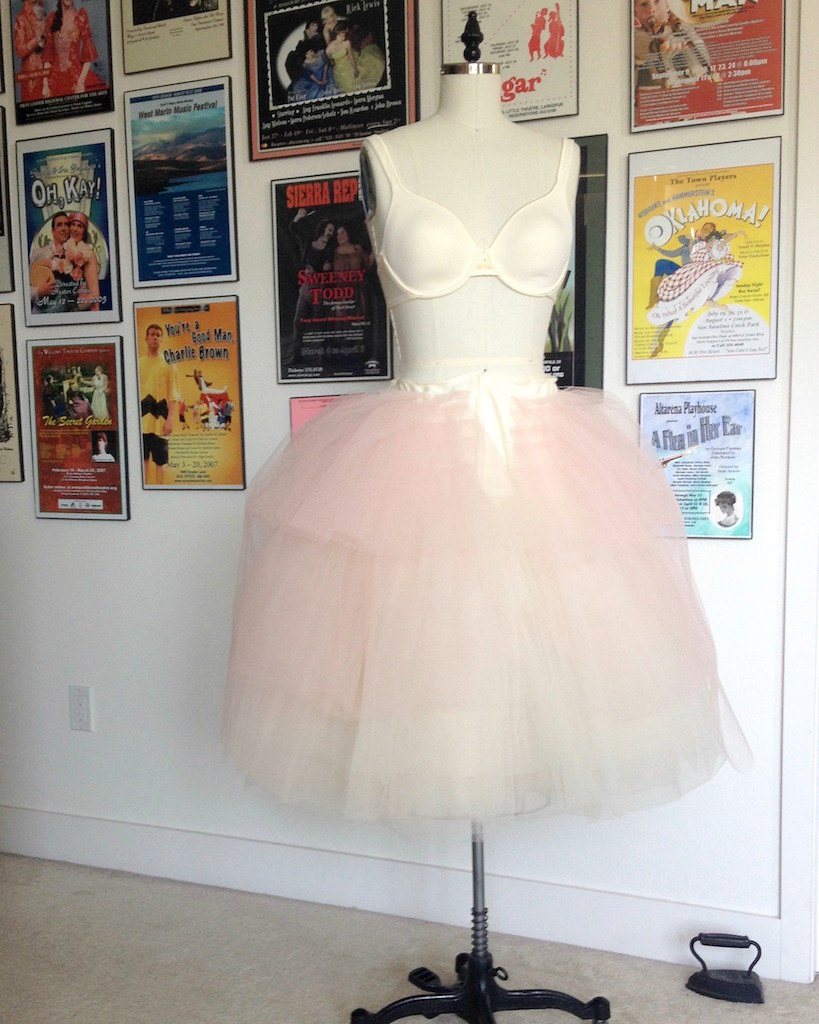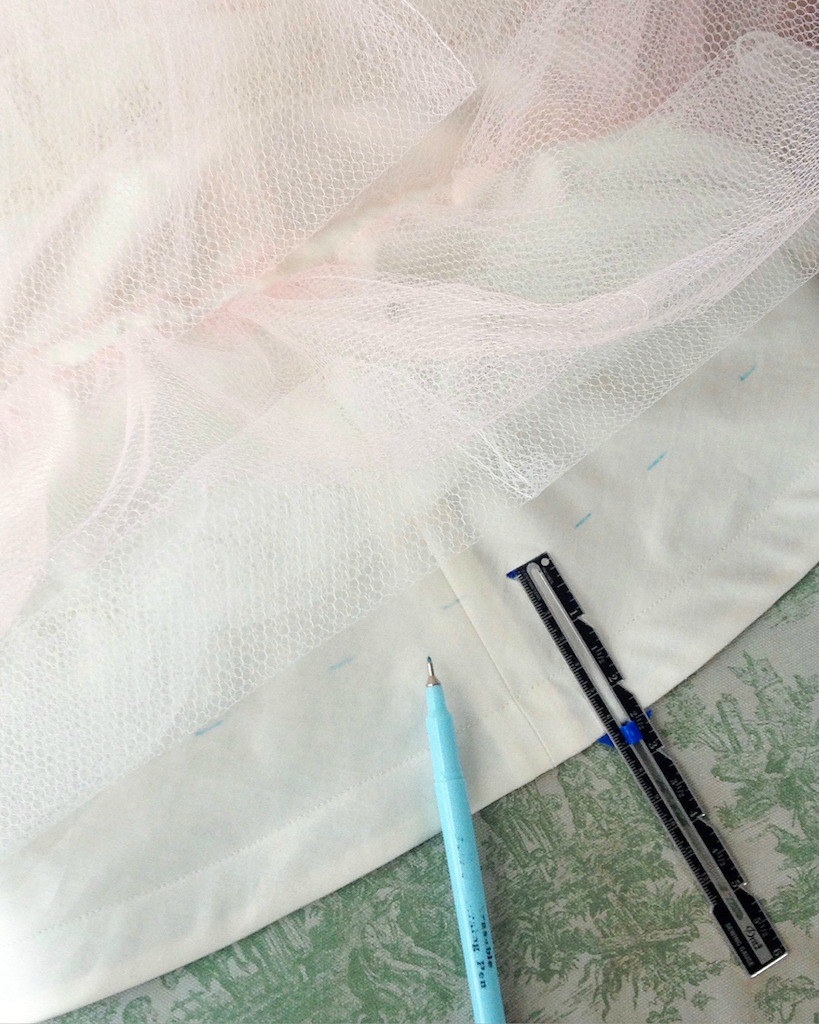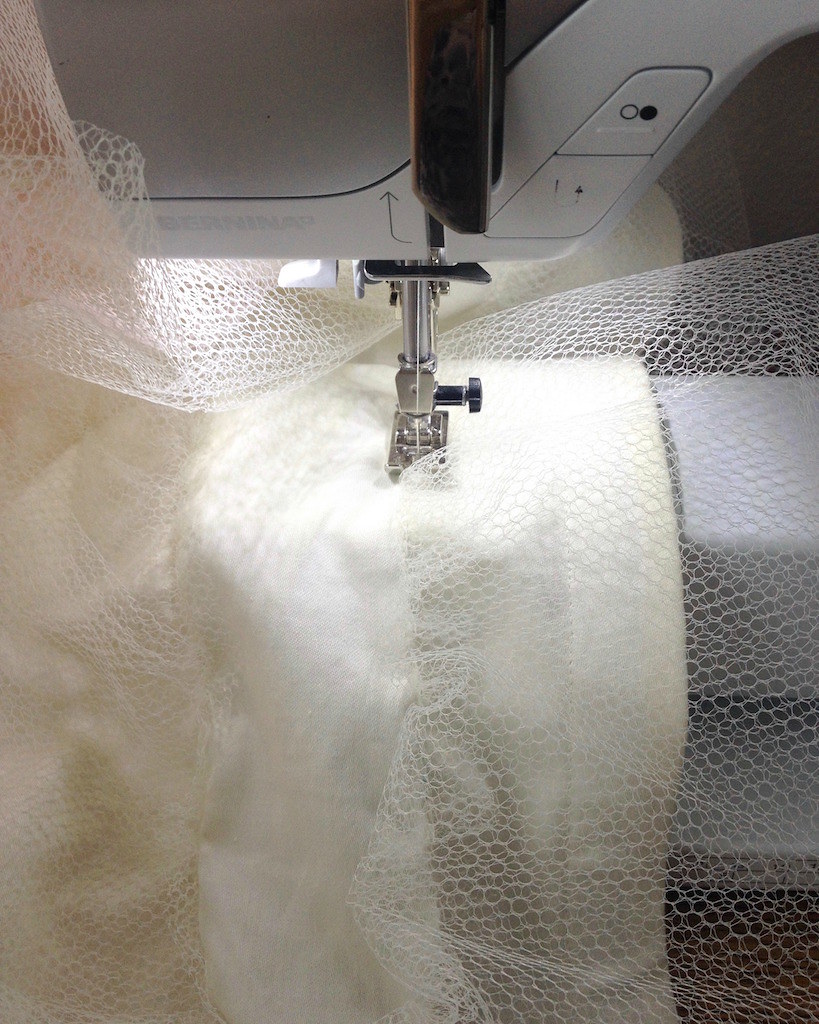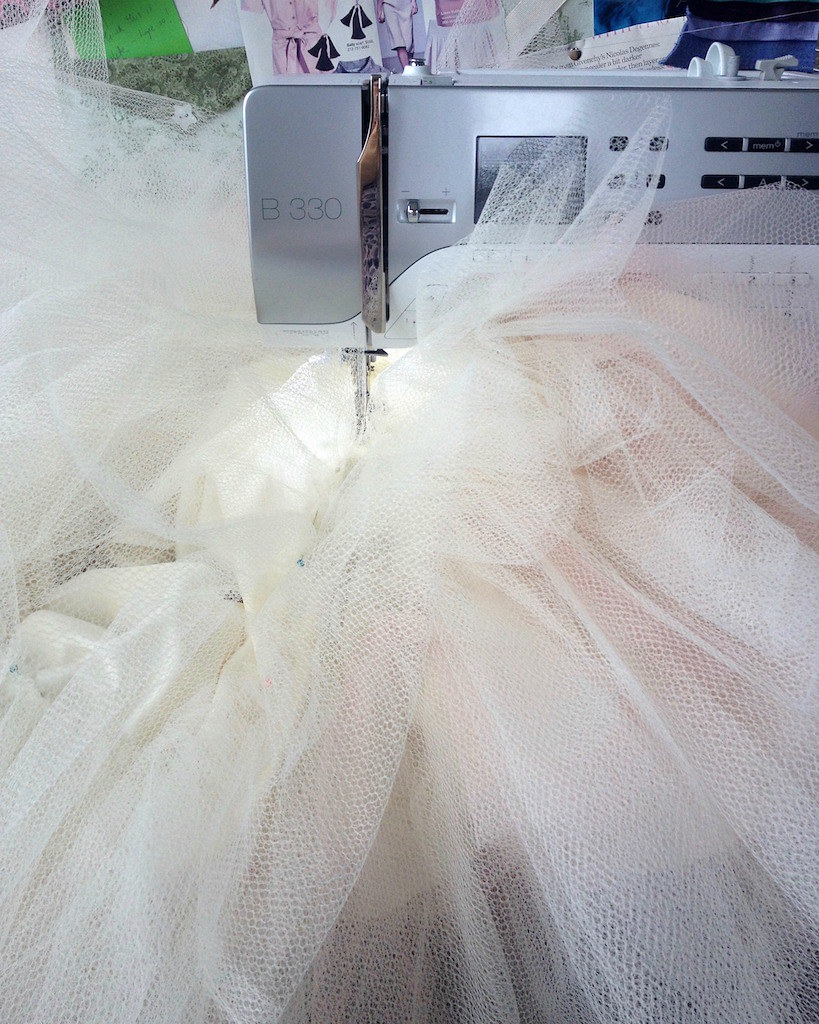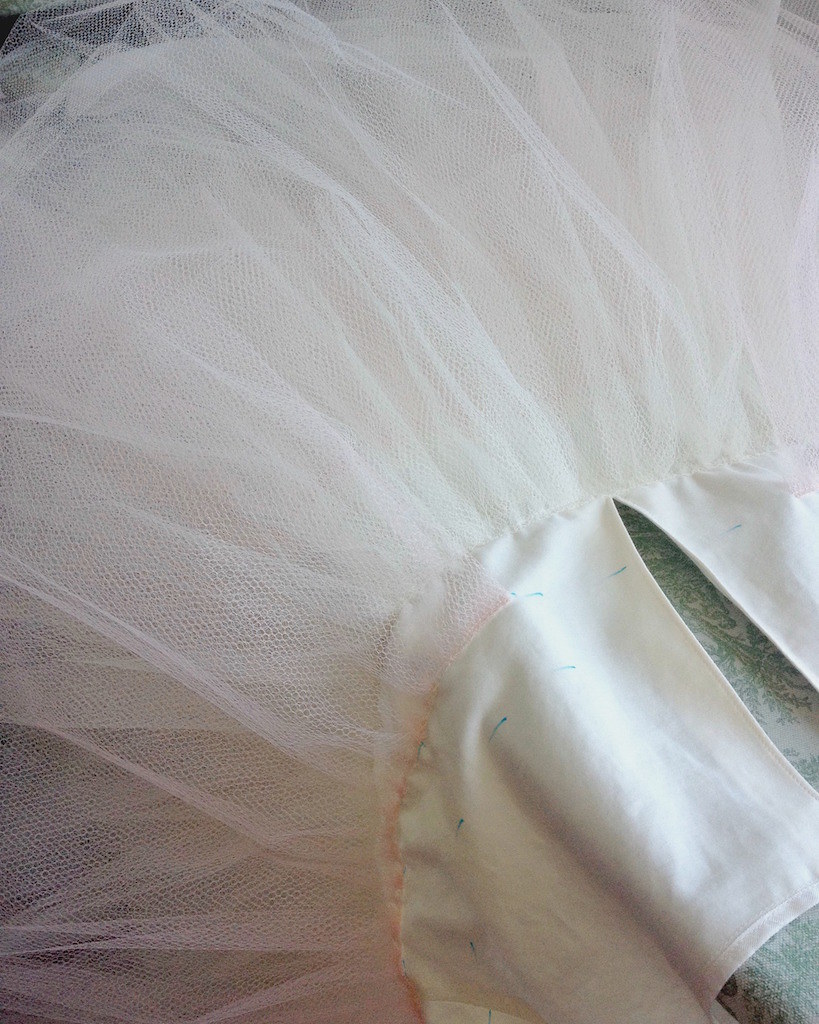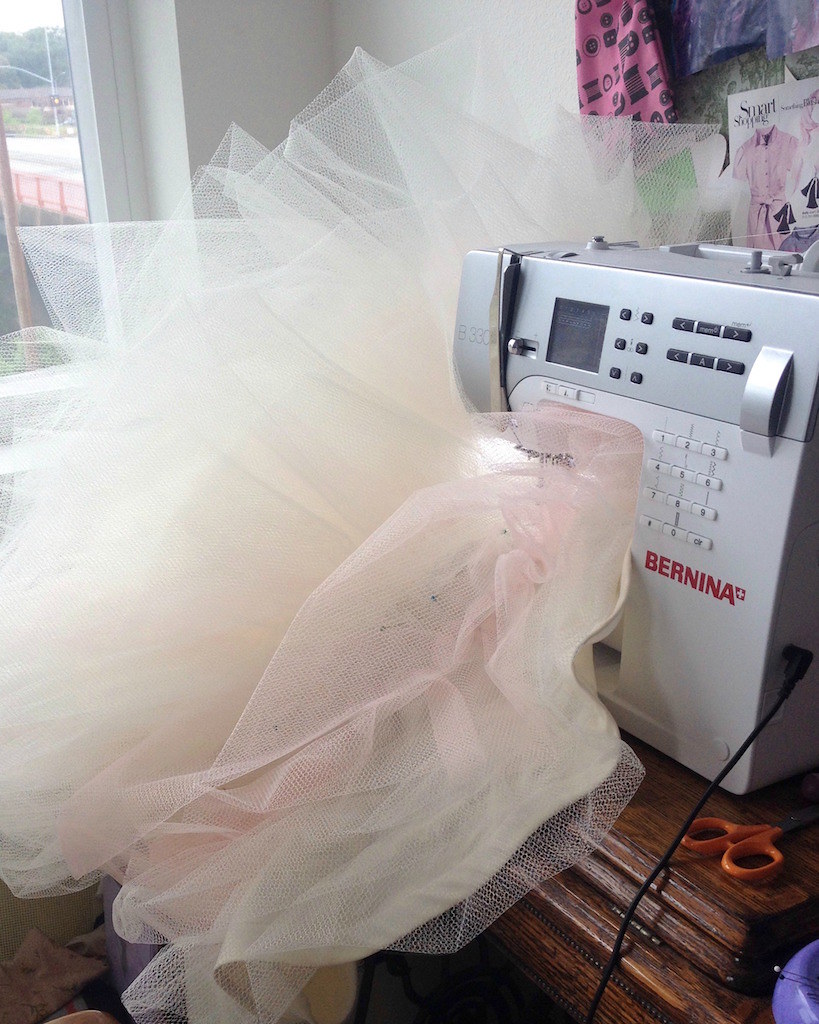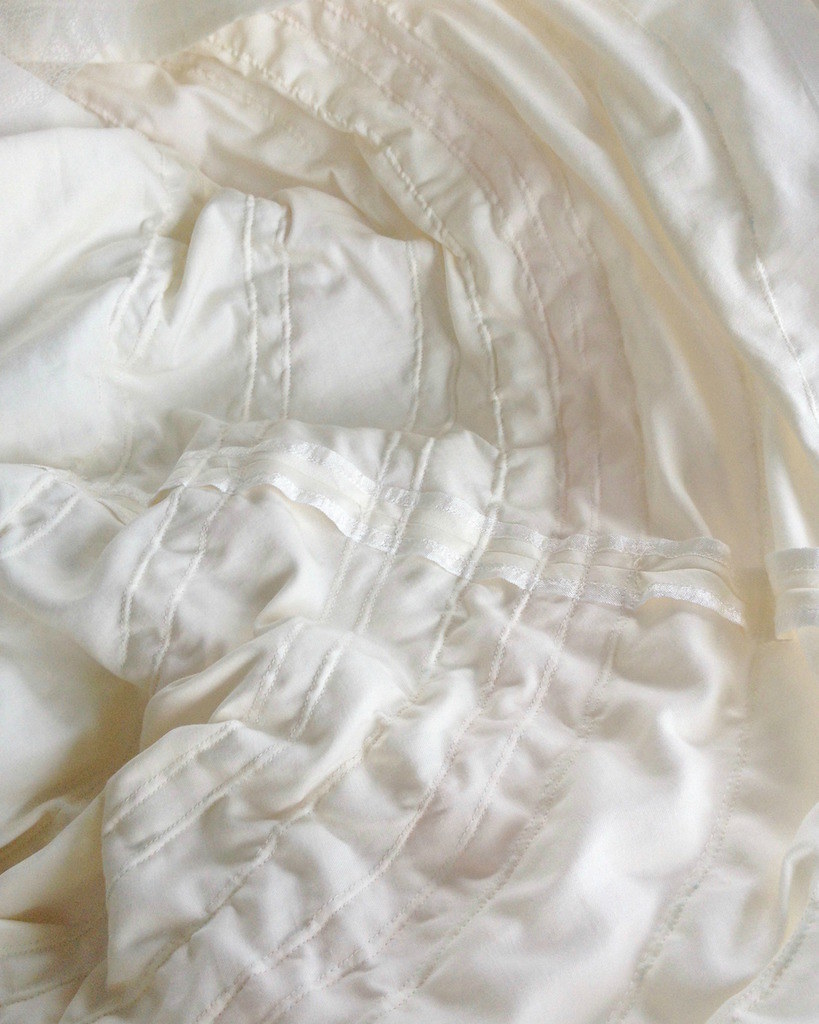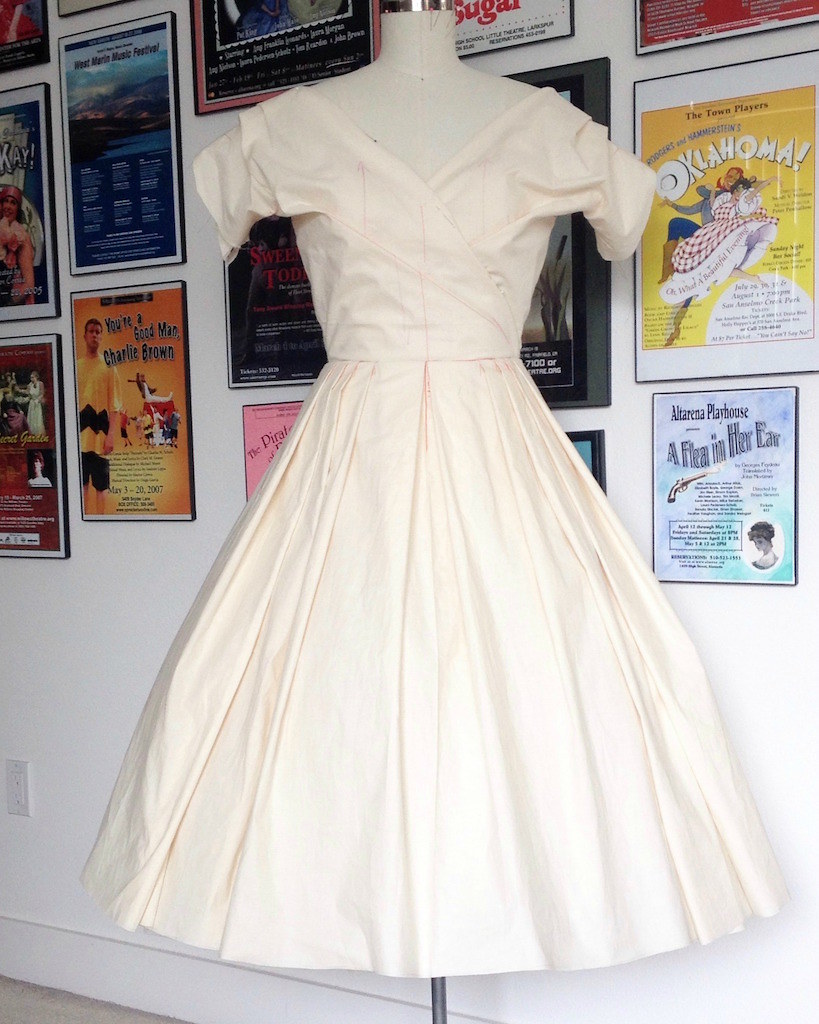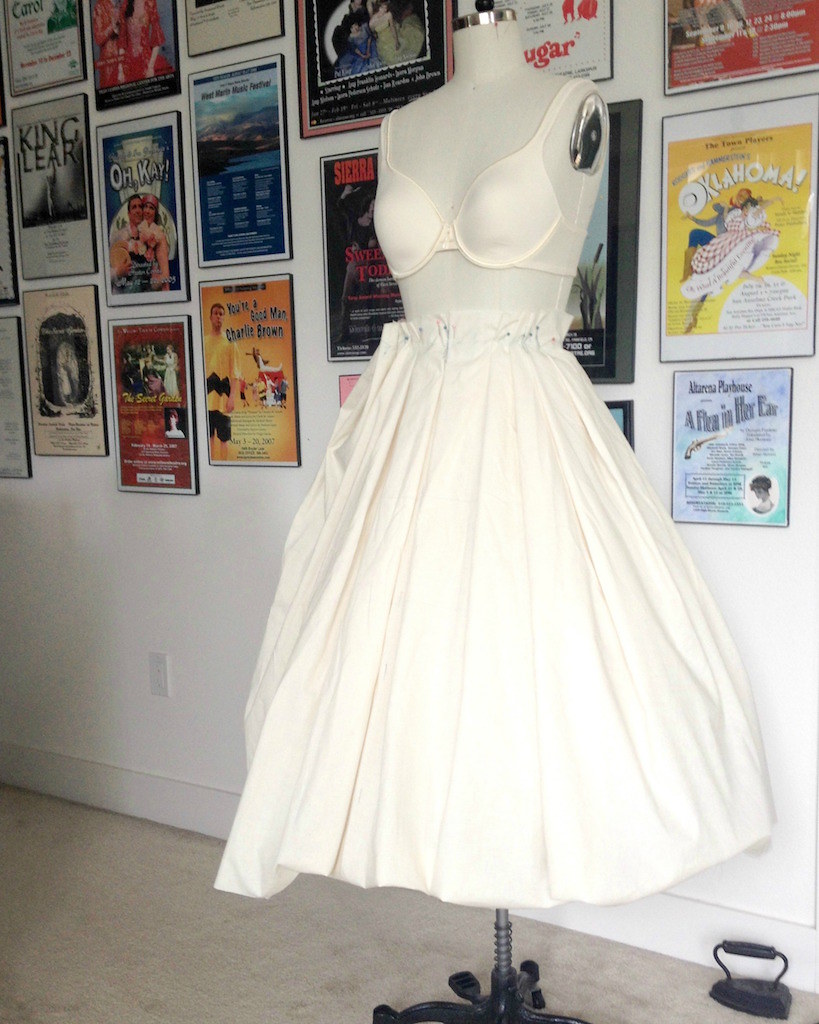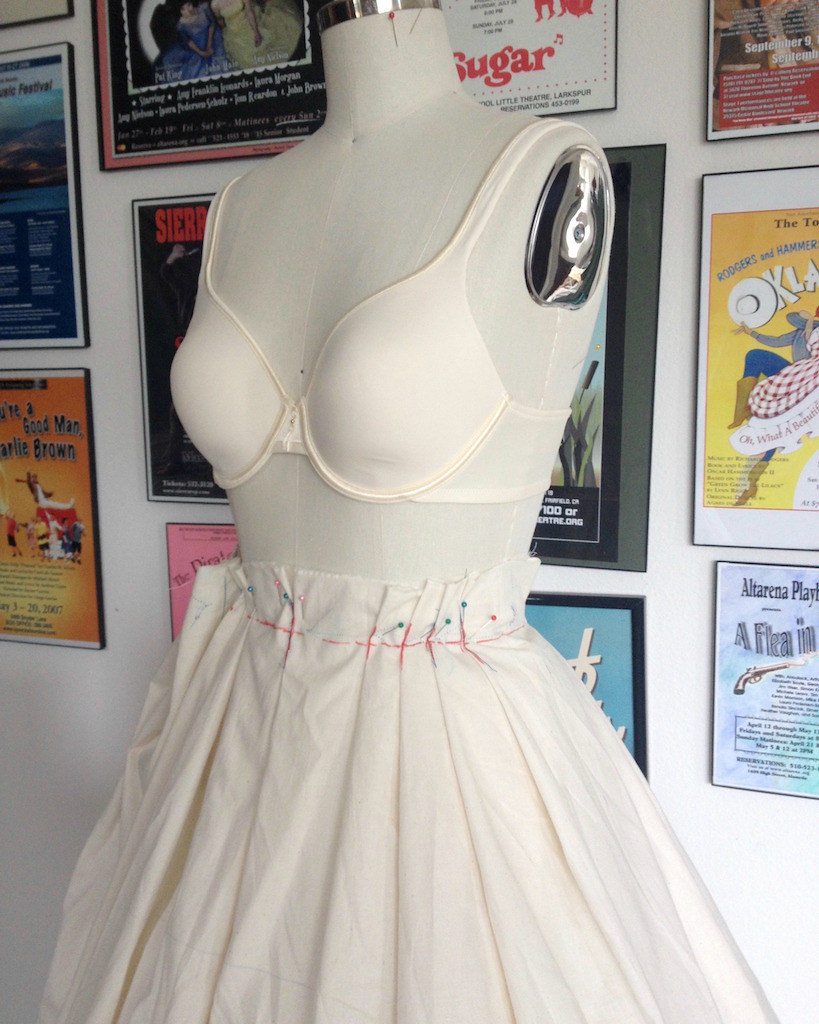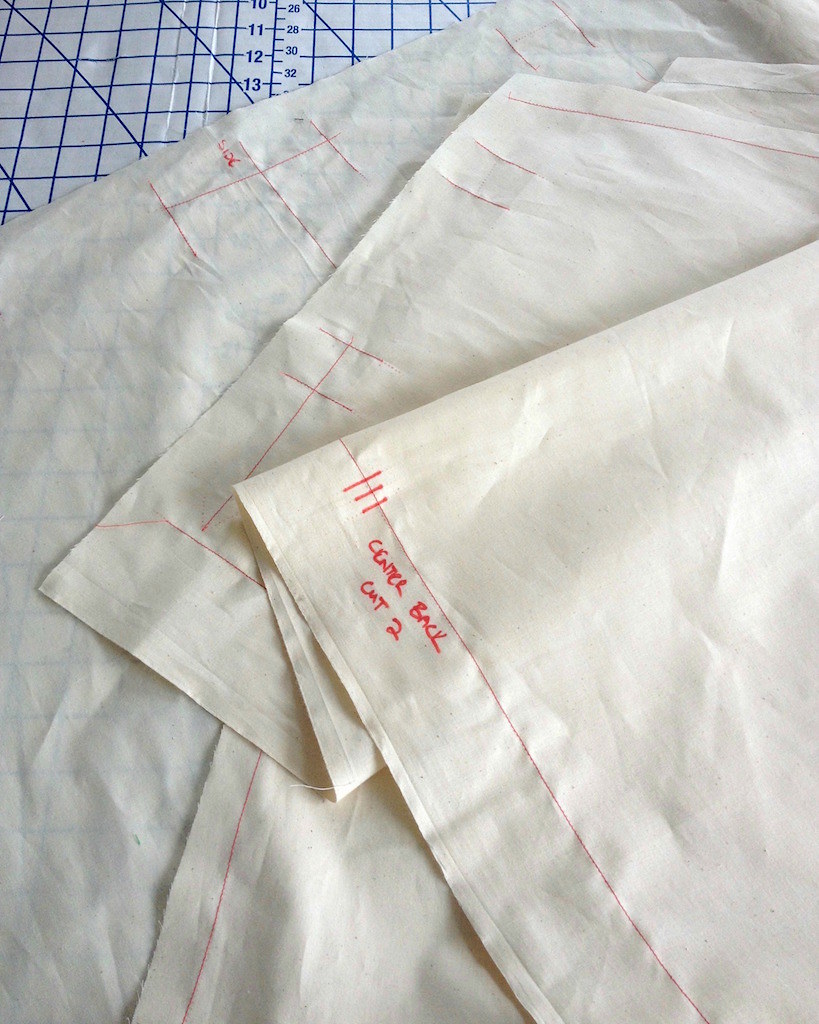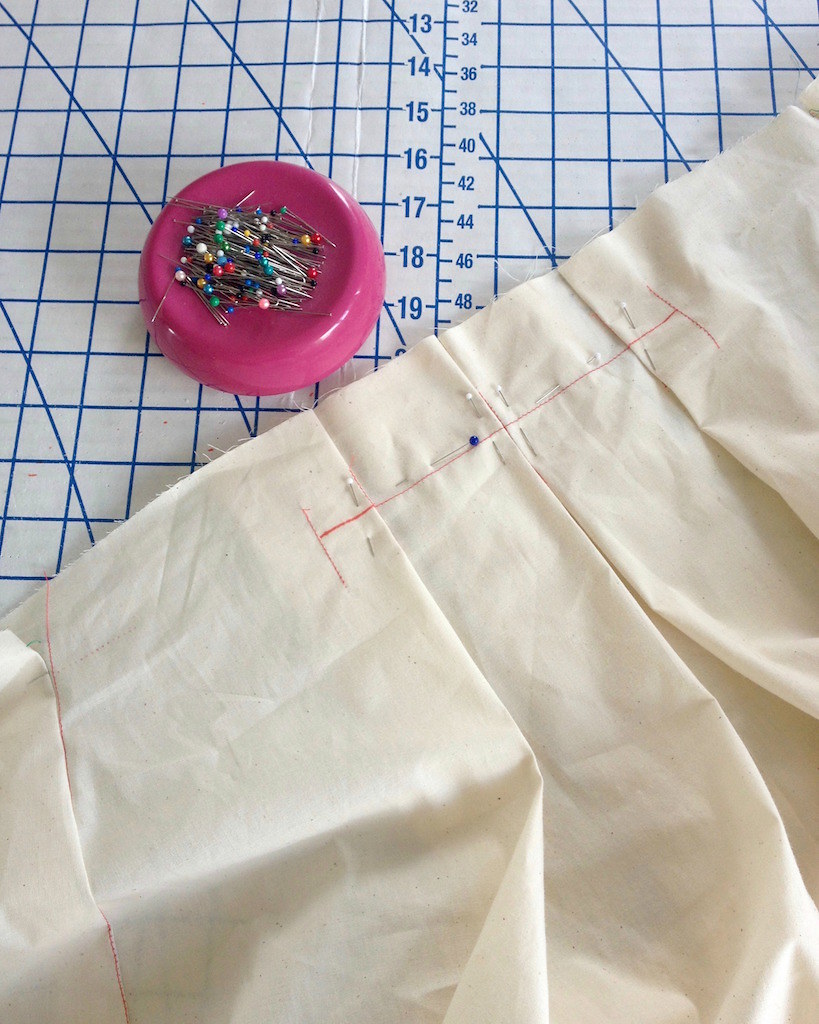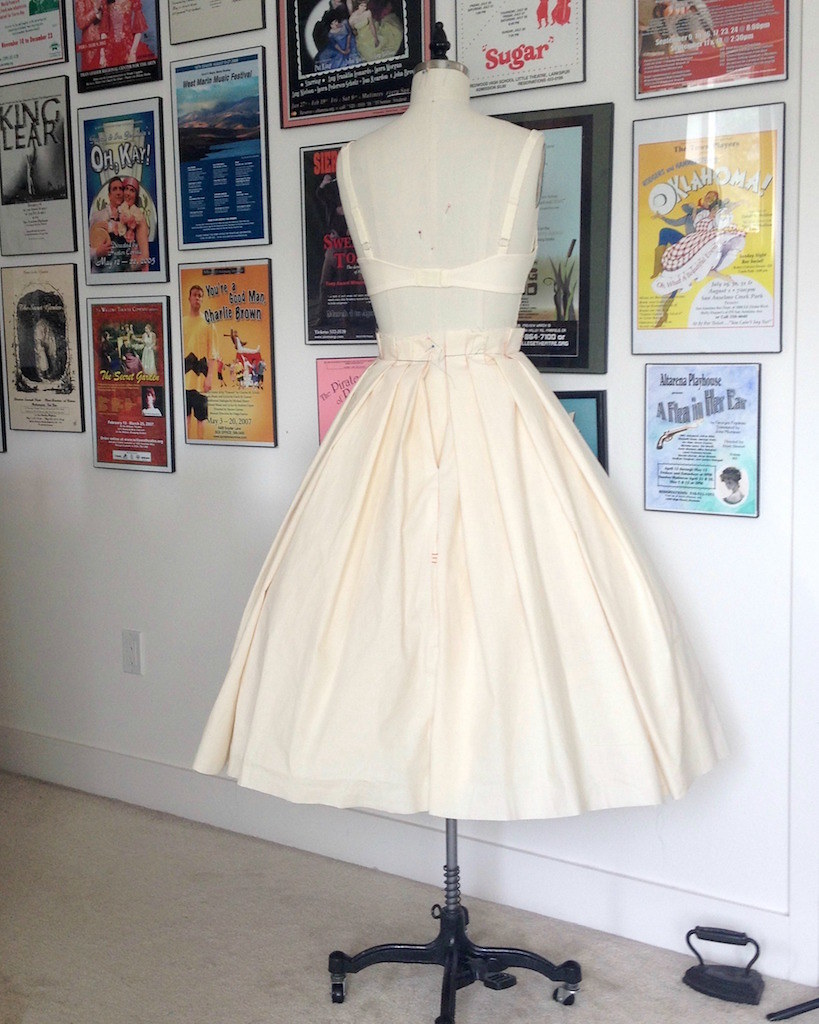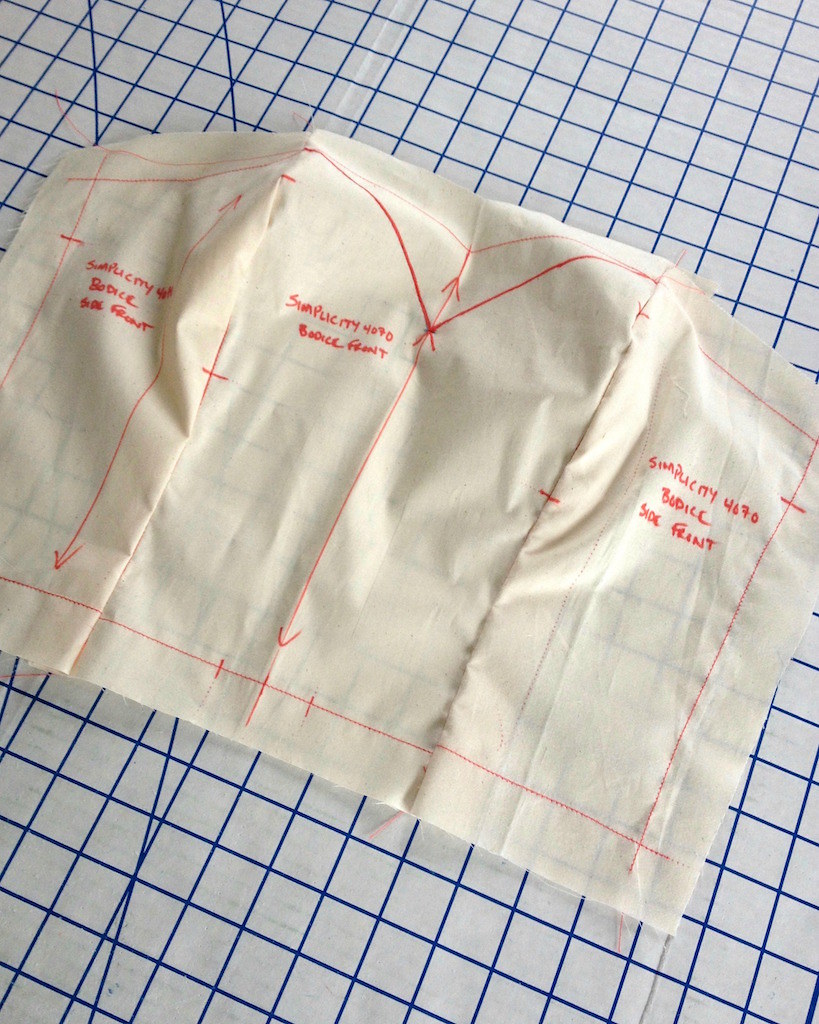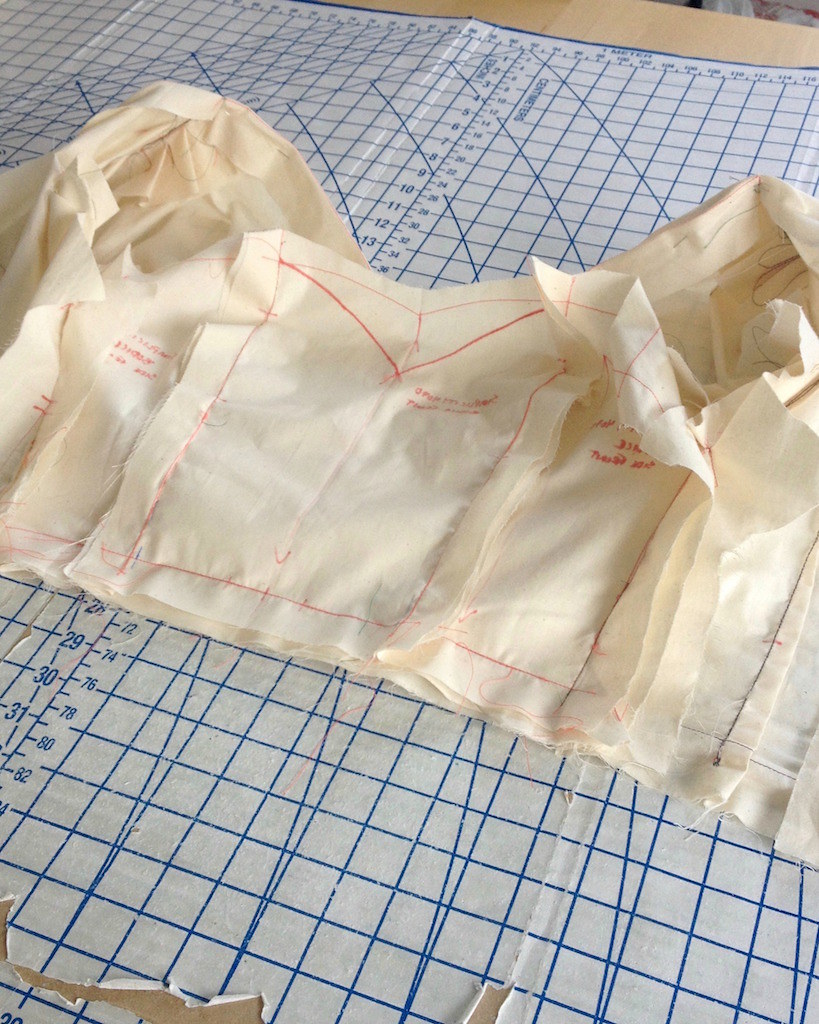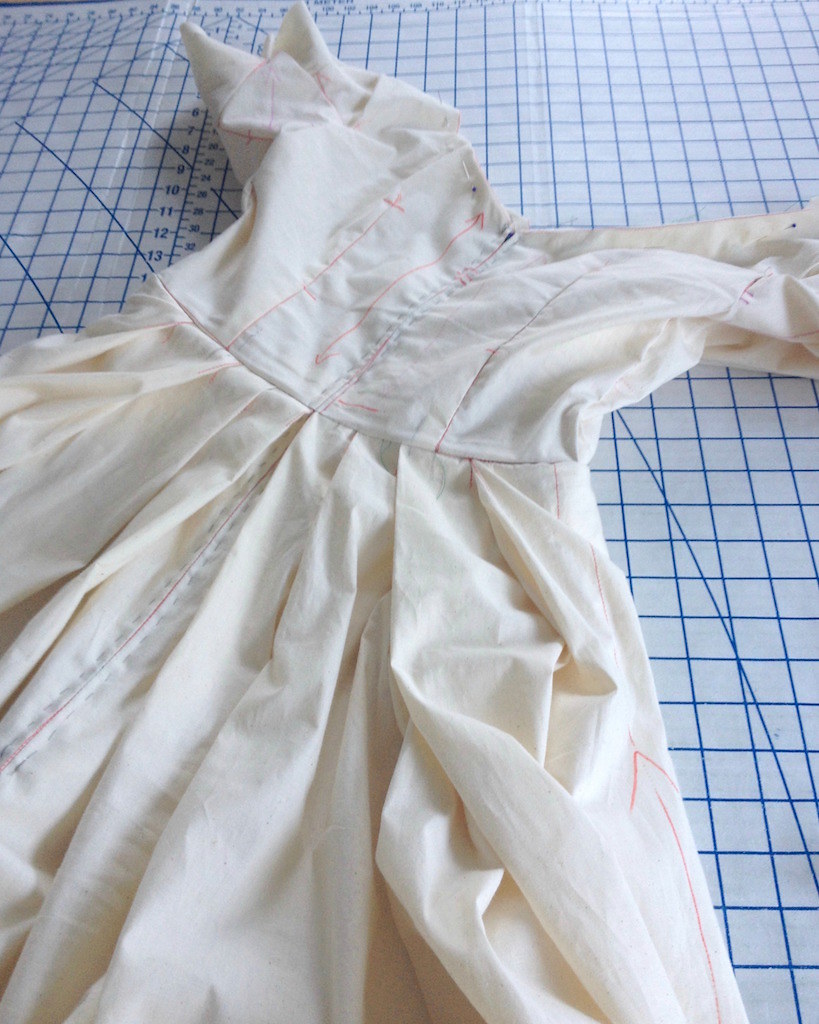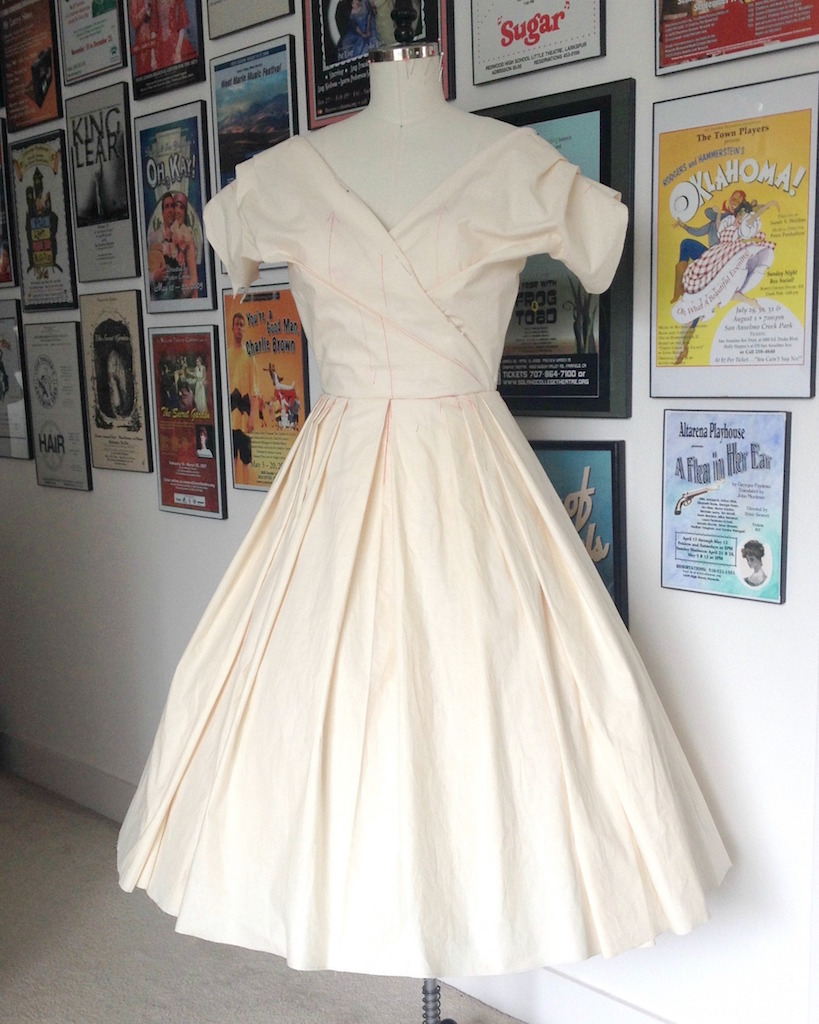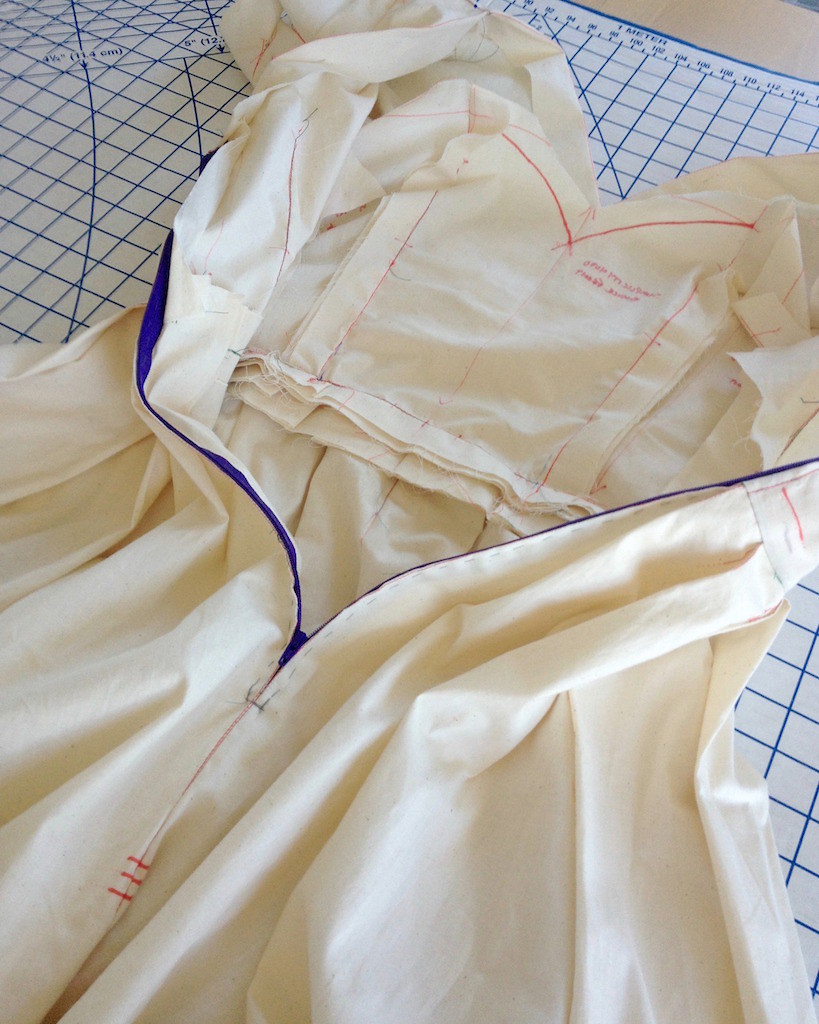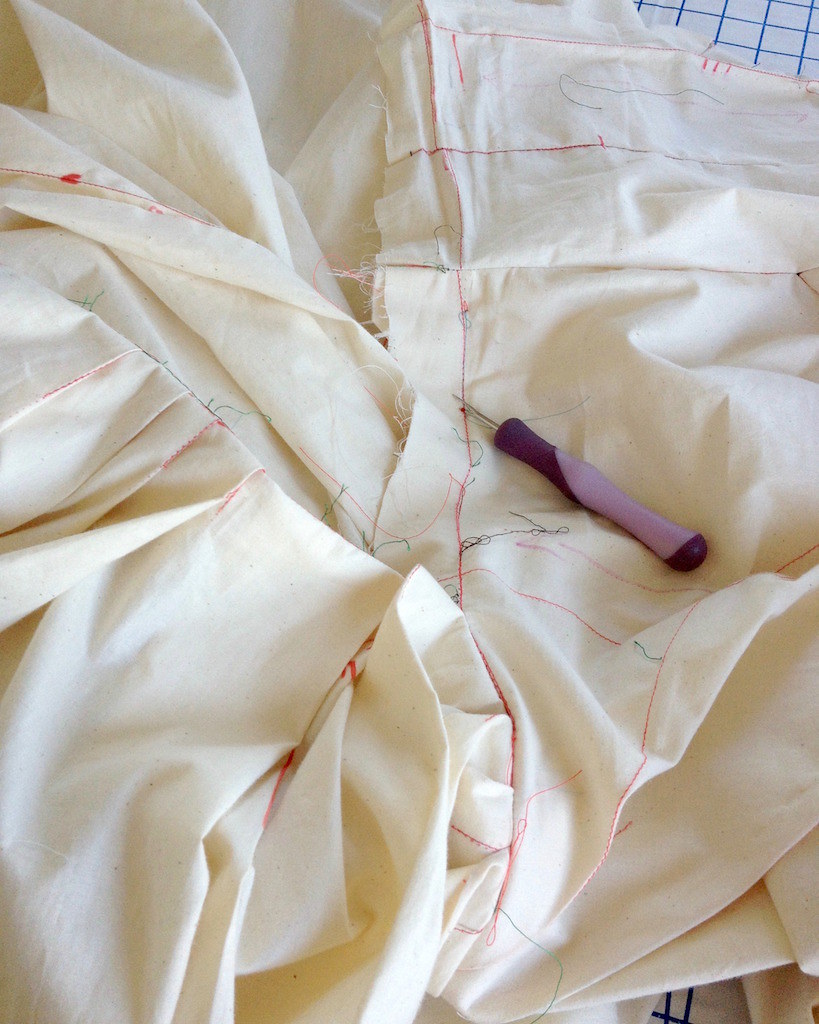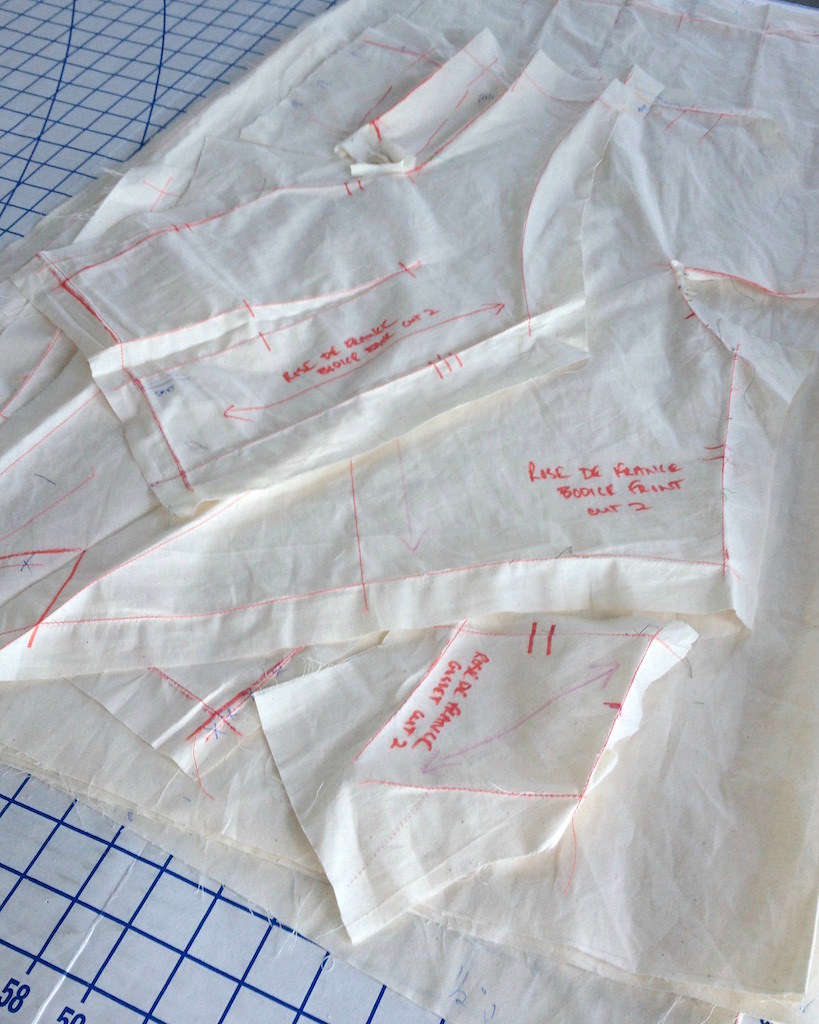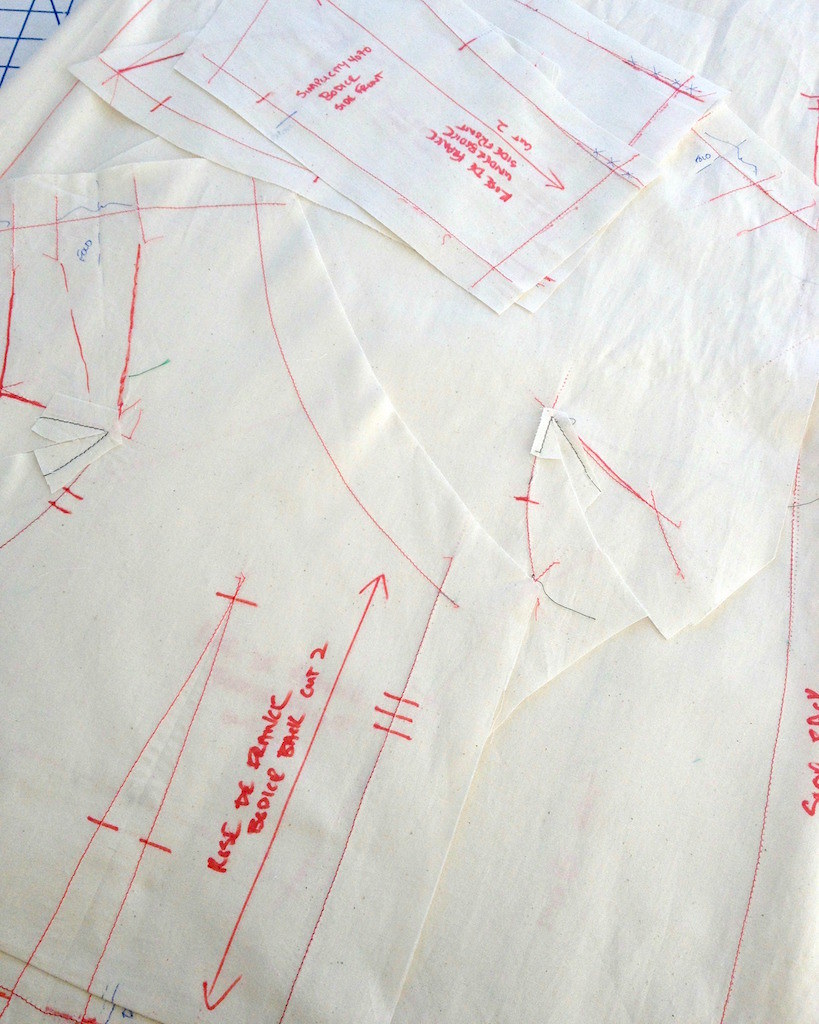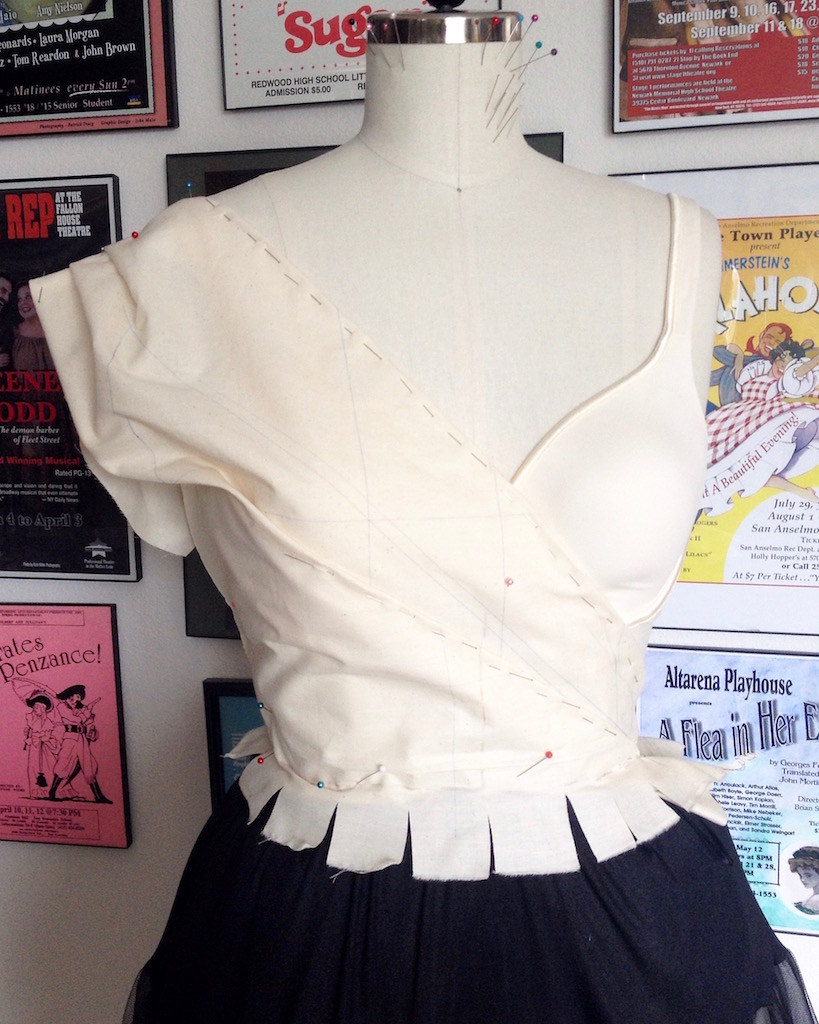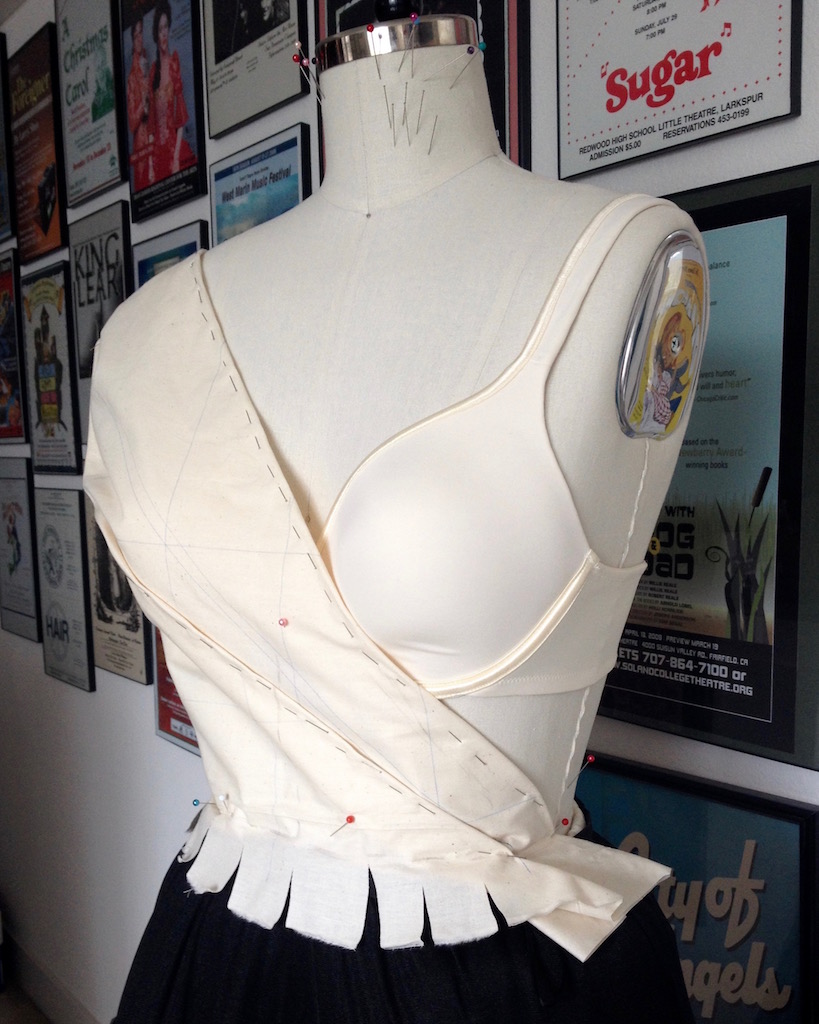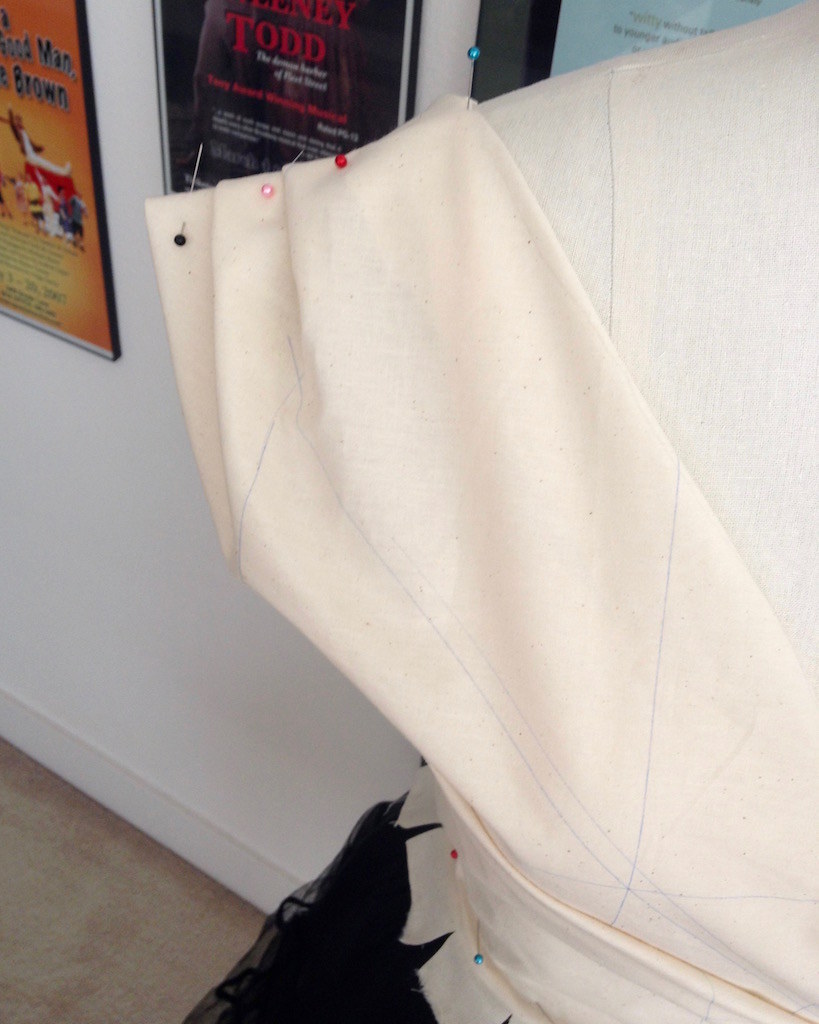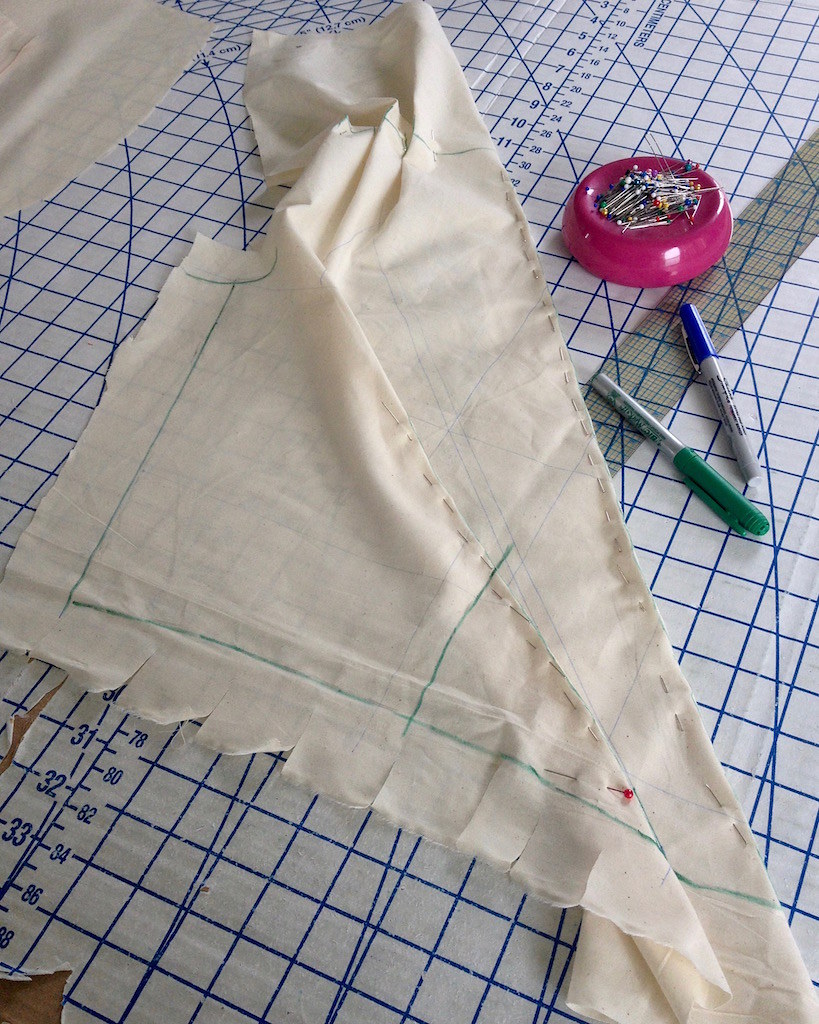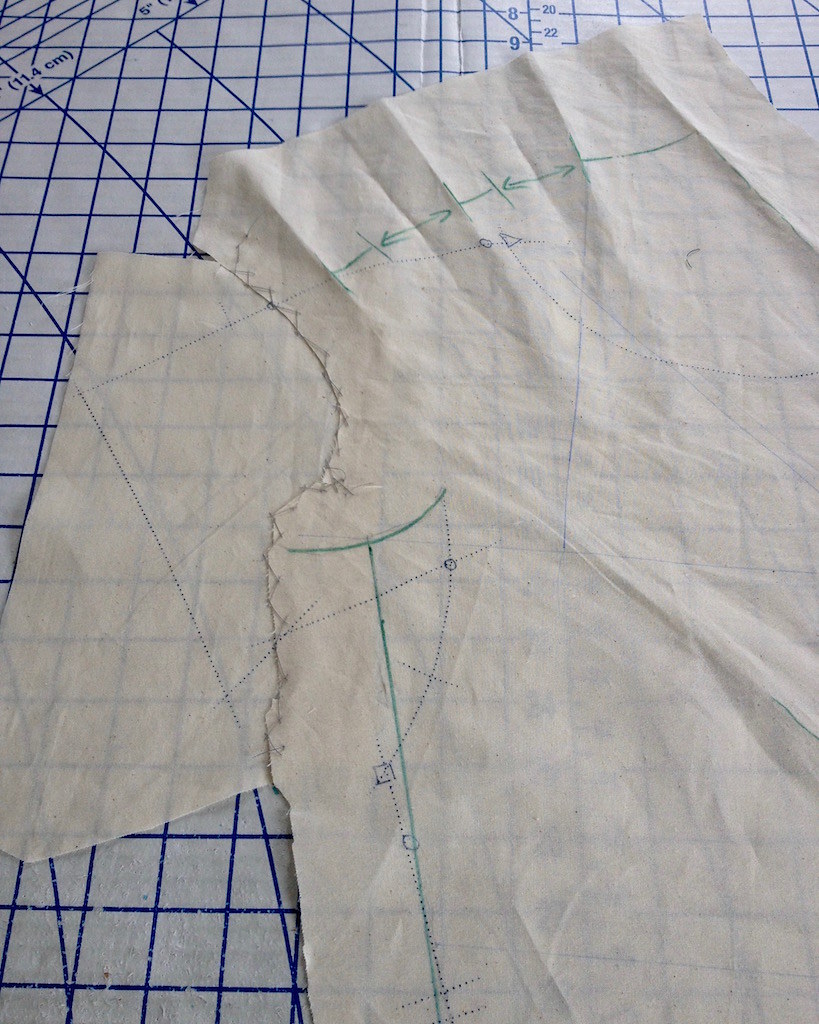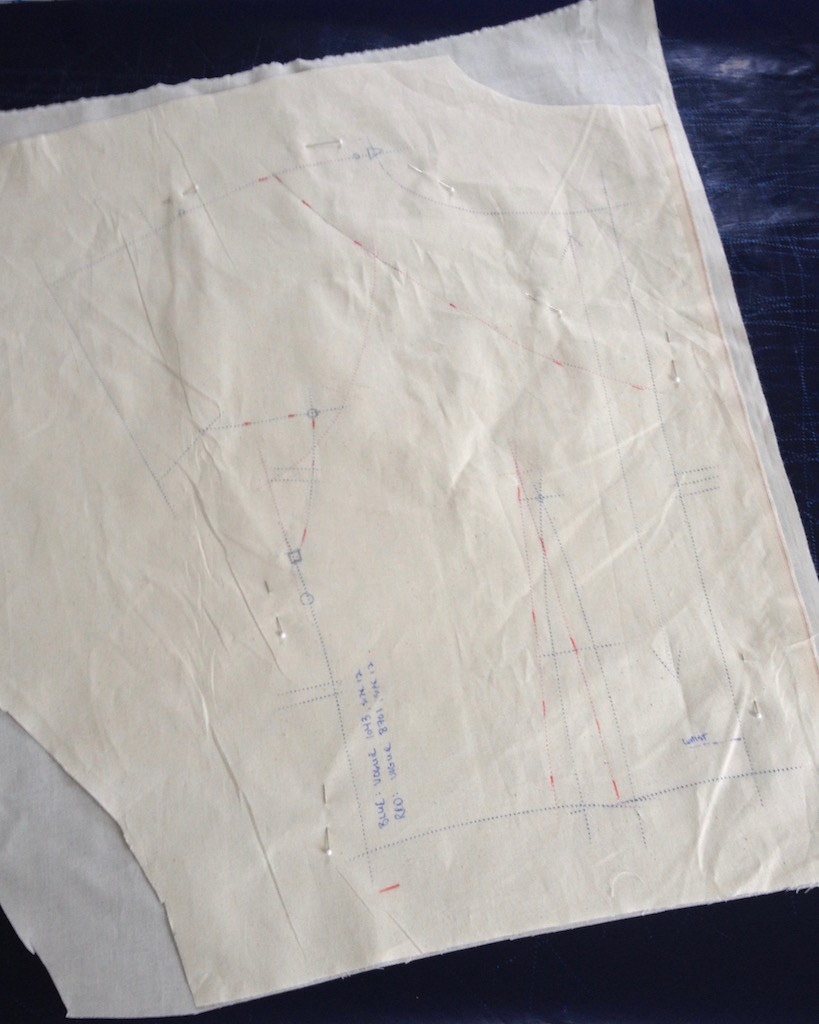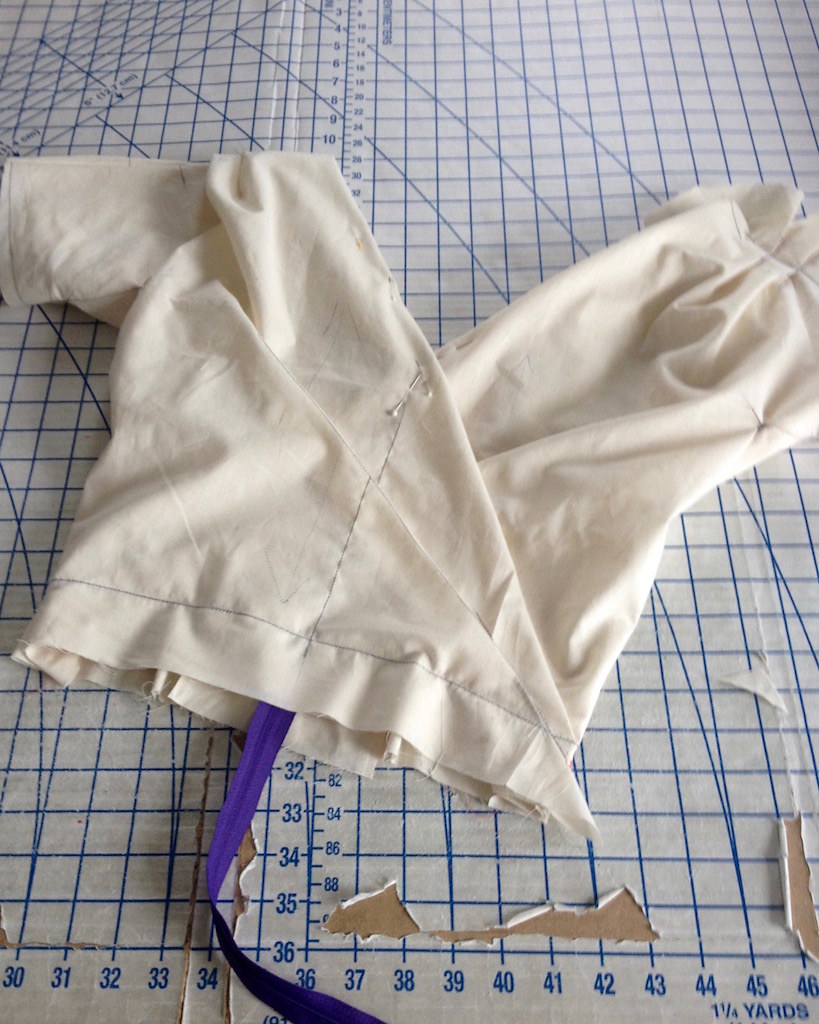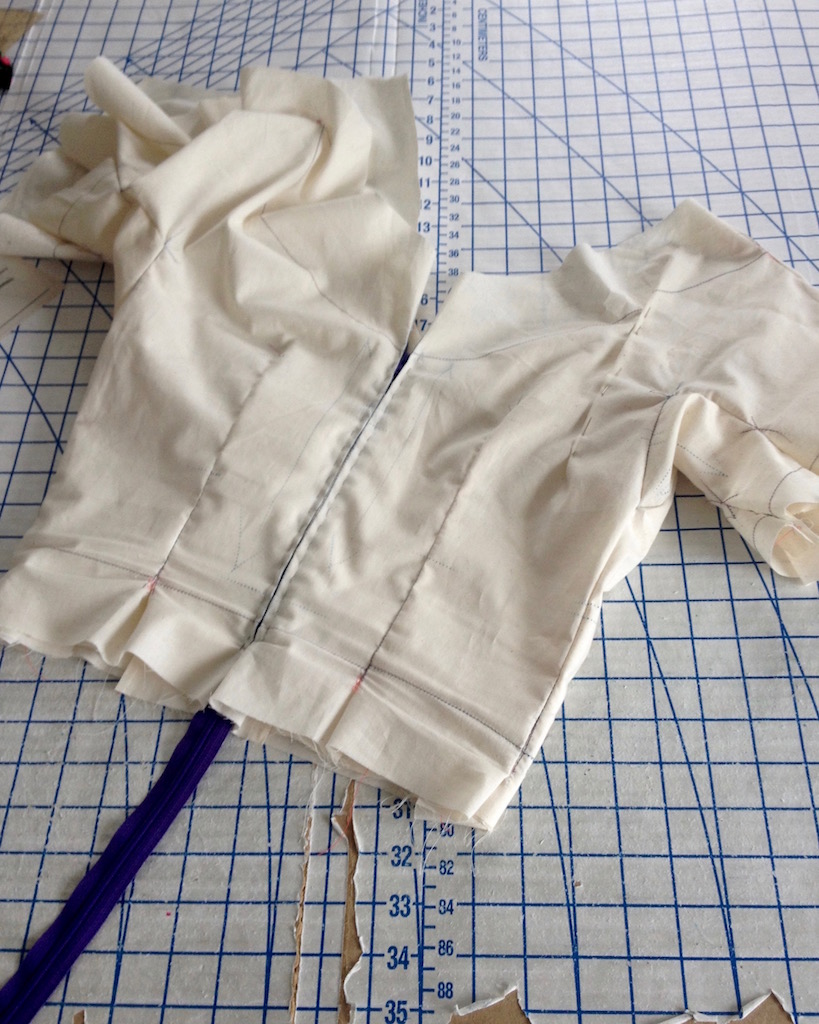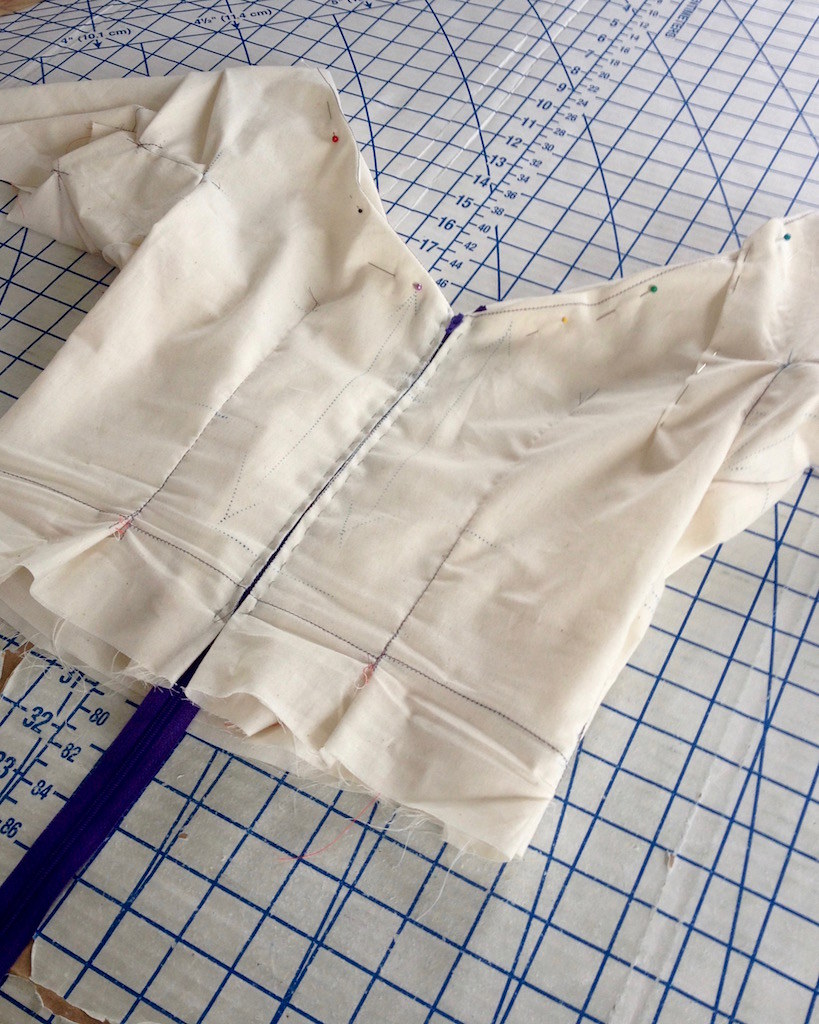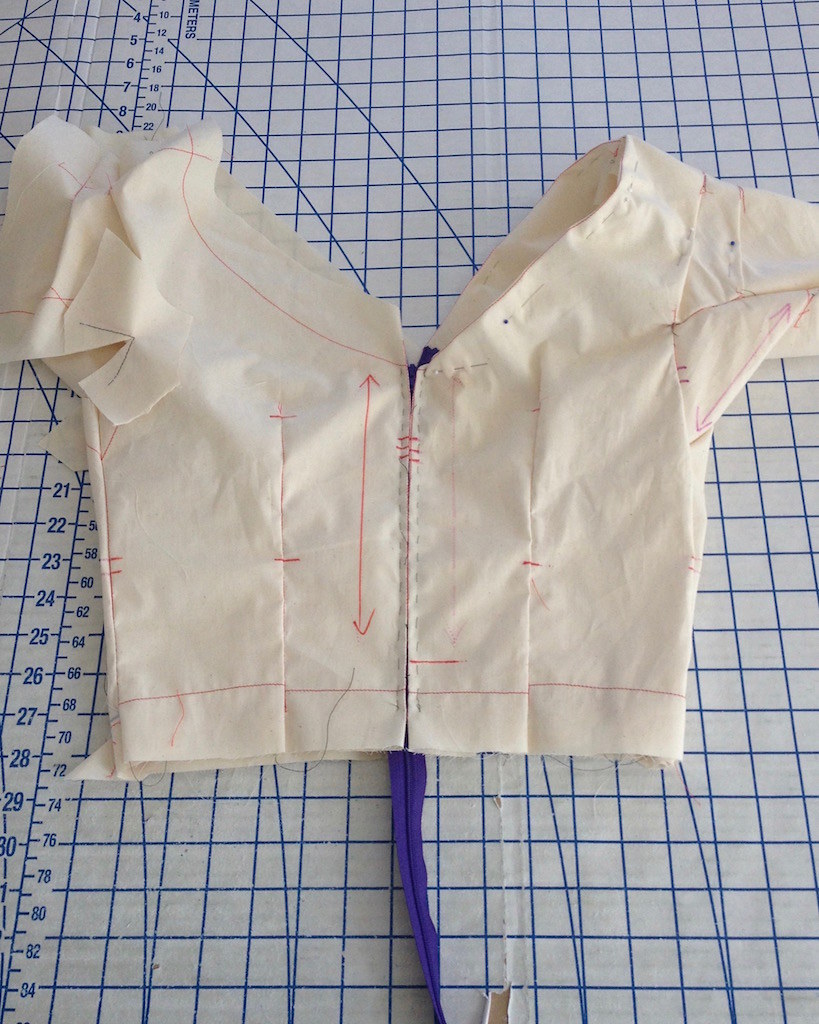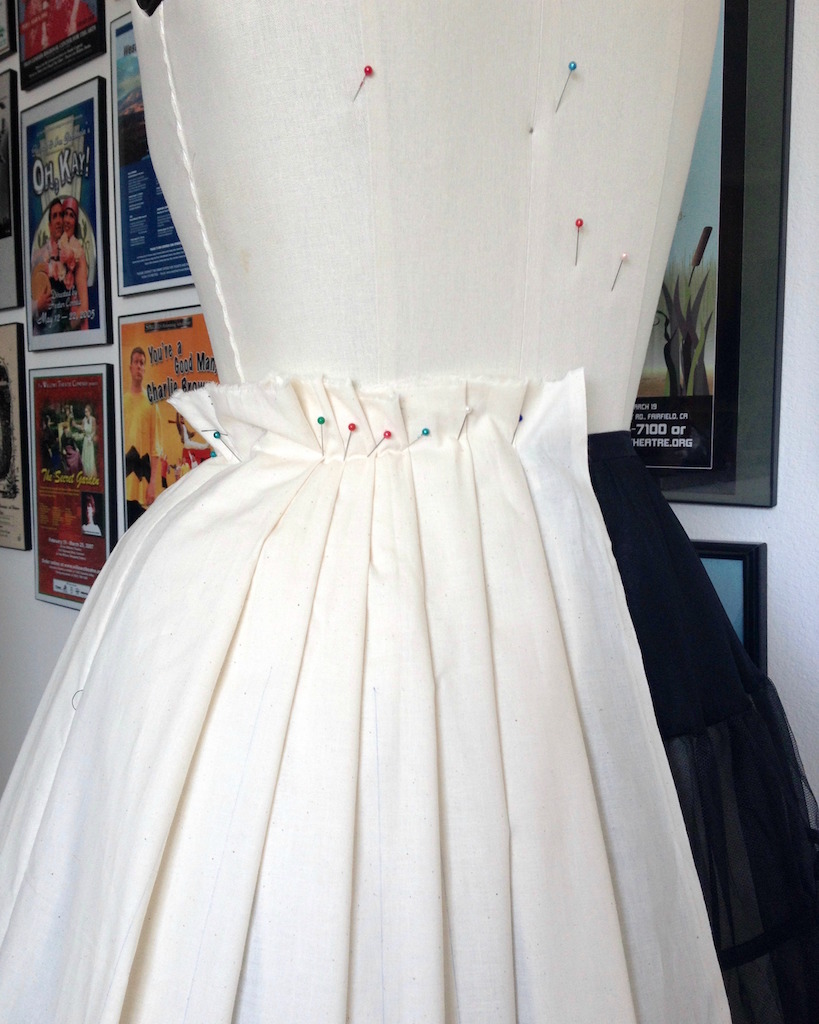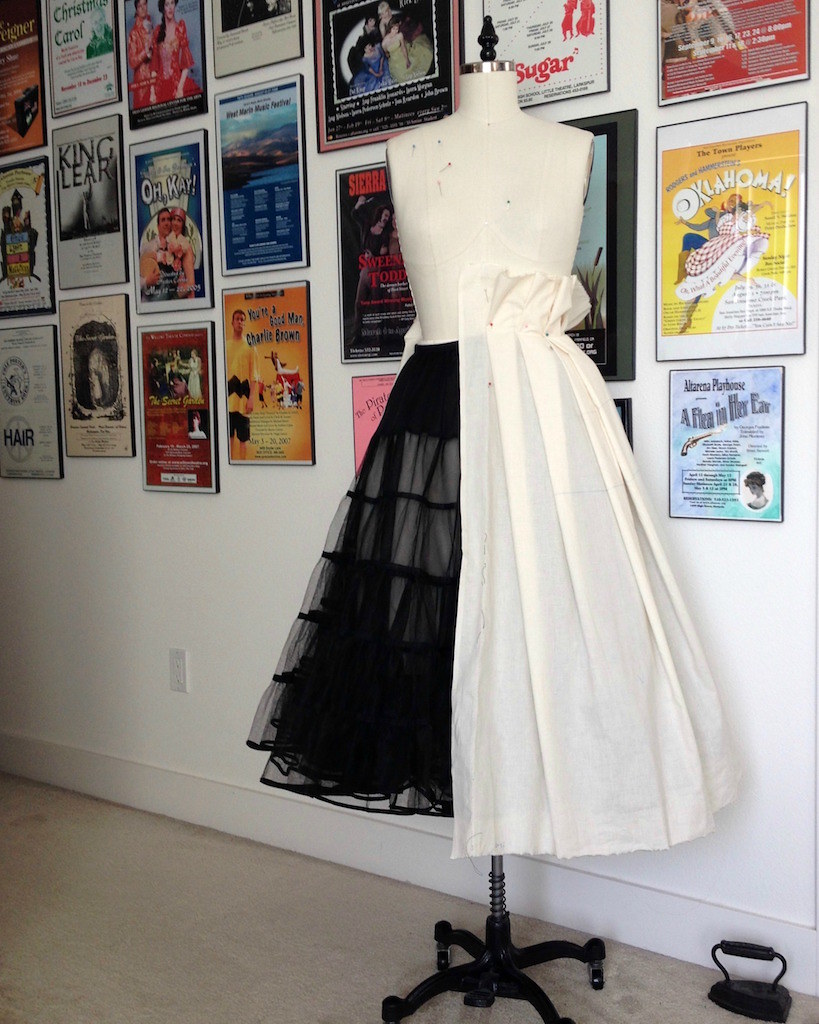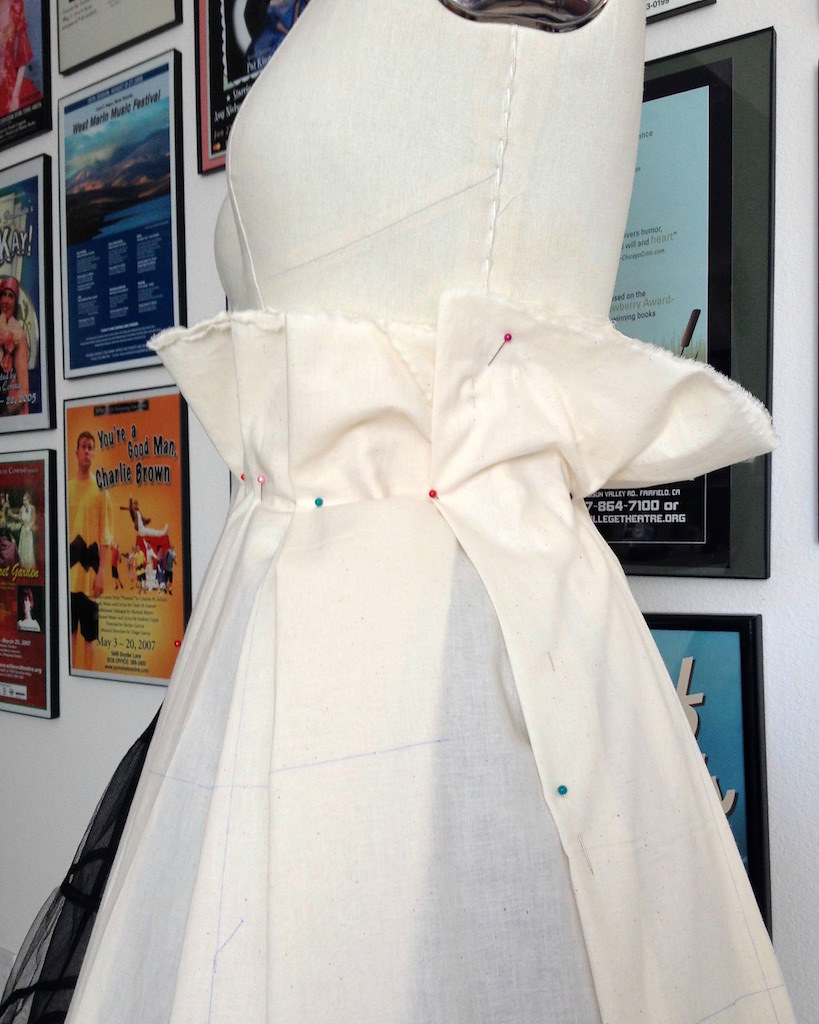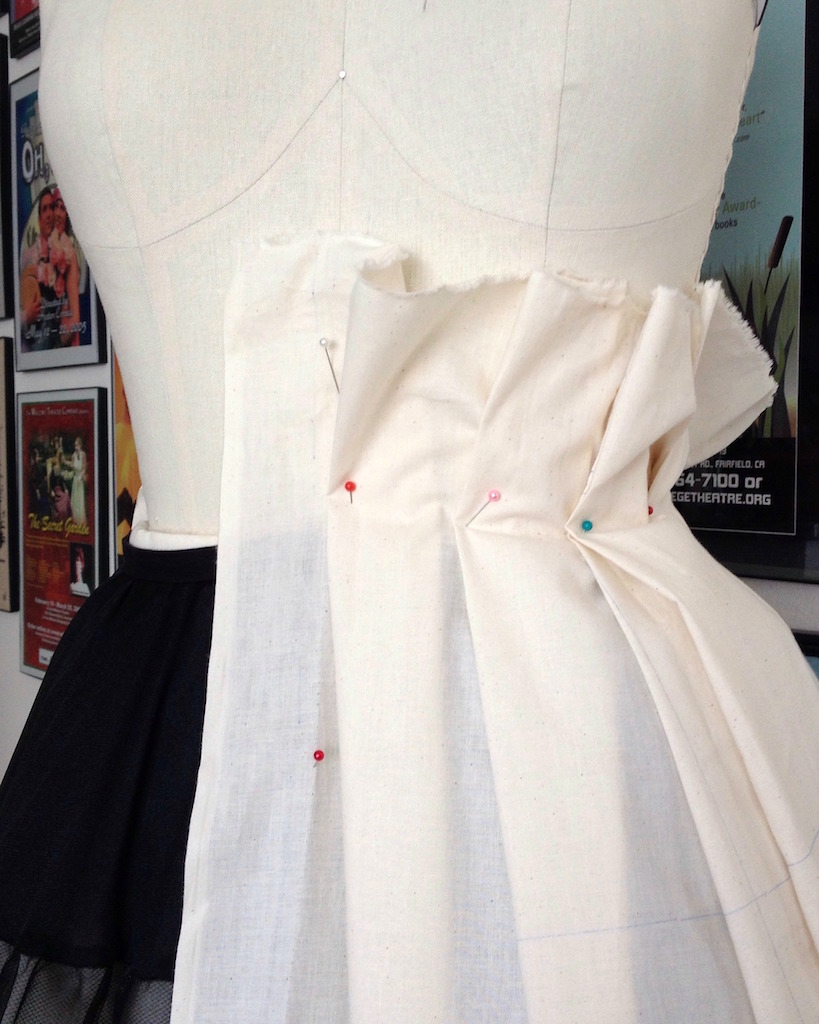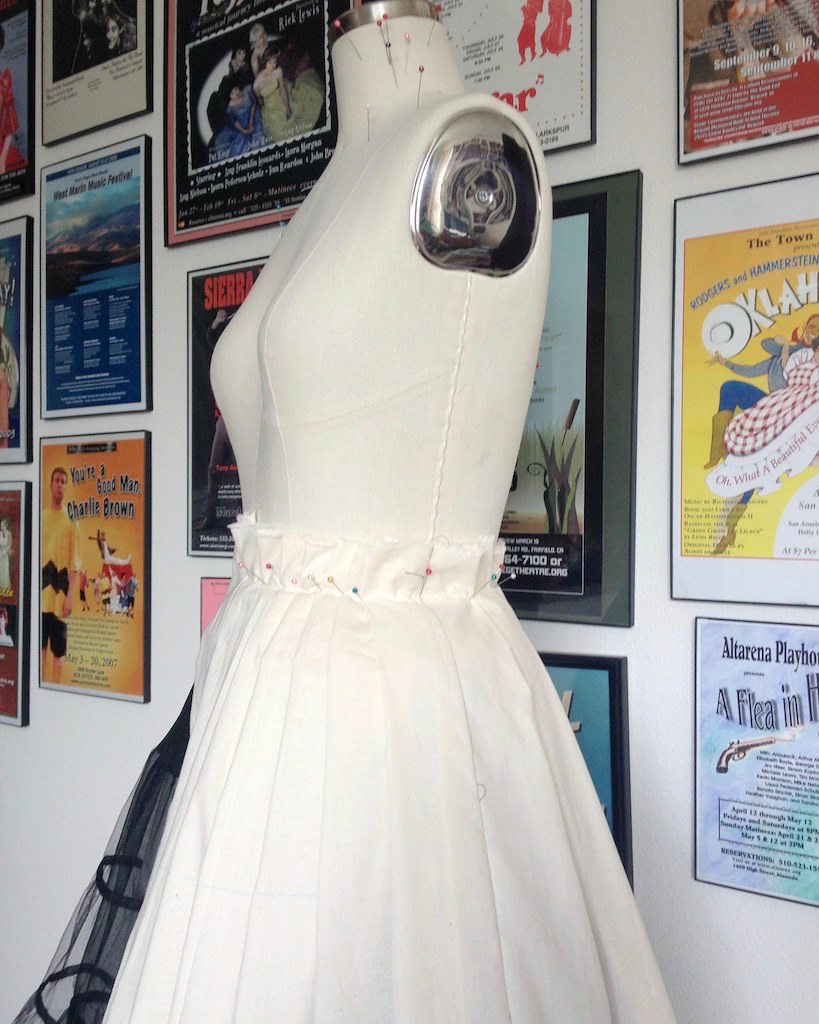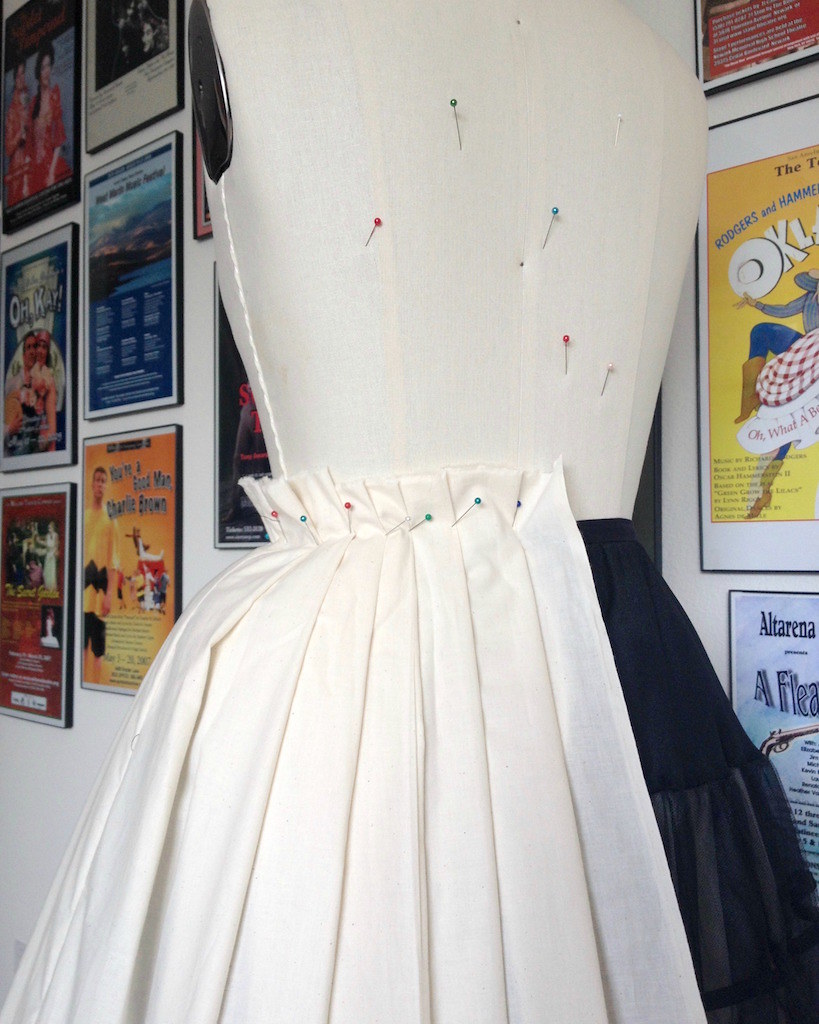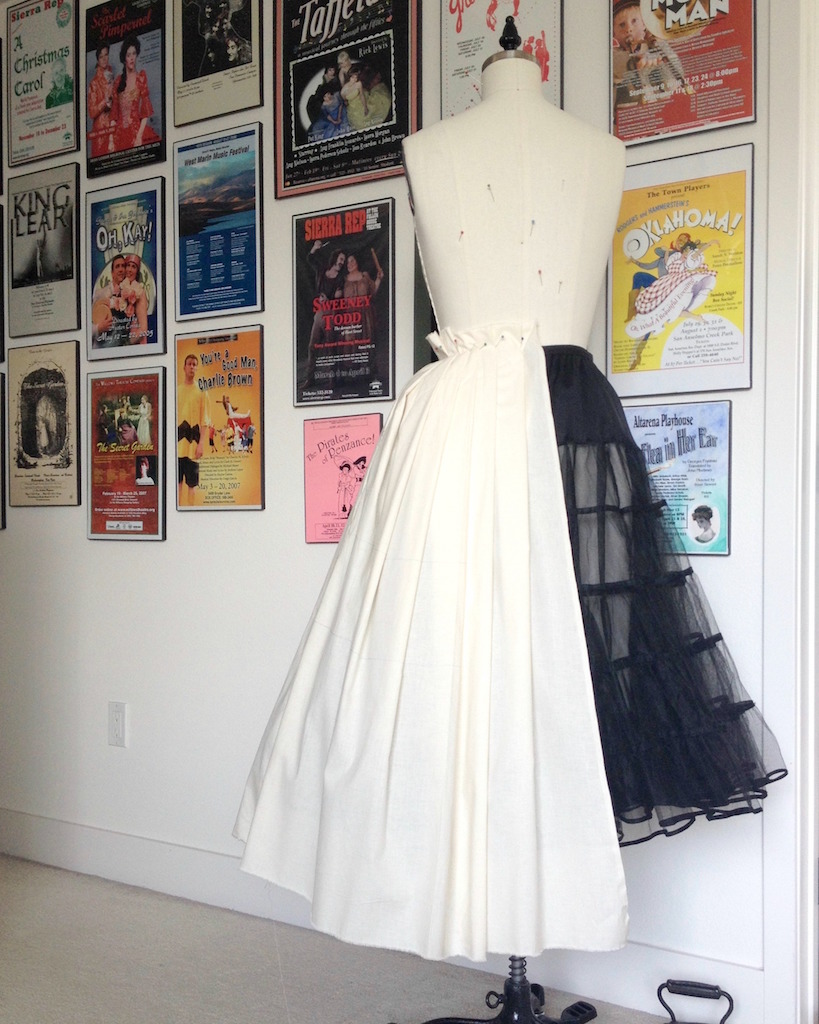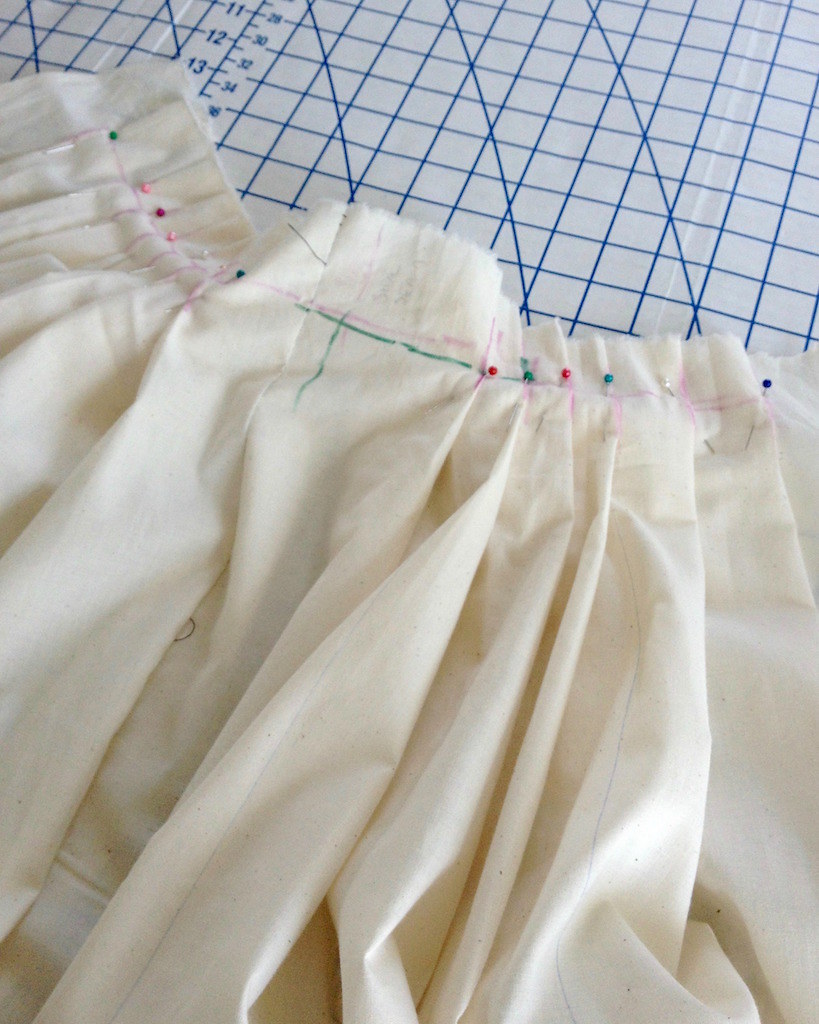So I couldn’t leave well enough alone. This petticoat needed to be over the top!
And so I just kept adding more and more netting . . .
and then some more . . .
until there was a mountain of netting.
This is what 20 yards of the stuff looks like.
I am not sure any more bulk would fit through my sewing machine!
Then I hemmed the cotton lining with a one inch horsehair braid.
This will help to keep the cotton skirt hem from collapsing and/or getting caught between my legs when I walk.
My initial thought was that I would attach this piece to the corselette. However, with the amount of netting on this skirt, it suddenly did not seem like such a great idea. That, and trying to pin the two together was getting on my last nerve.
With time running out, I found some grosgrain ribbon in my stash and attached it to the cotton portion of the garment. It is not pretty, but it does the job. A skirt hook & bar closes the waistband just off of center front.
And that is one fluffy petticoat. Only time will tell if I can fit in my car while wearing this!

